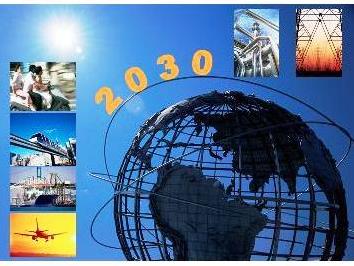iTREN-2030
05.21
From 2007 to 2009
TML developed the TRANS-TOOLS model for EU transport and improved its policy forecasting capabilities by linking it to advanced energy, environmental, and economic models through the iTREN-2030 project. This resulted in two scenarios to 2030: a reference scenario based on the 2008 frozen policy and an integrated scenario with future policy measures.
The TRANS-TOOLS model was developed as an analytical network model for transport in the EU. Its capacity to make policy forecasts can be significantly improved by linking it to state-of-the-art models in the fields of energy, environment, and economic analysis. iTREN-2030 developed this link from TRANS-TOOLS to the following state-of-the-art models: POLES for energy technology and energy prices, TREMOVE for emissions and vehicle fleet development, and ASTRA for economic impact.
The main outcome of iTREN-2030 is twofold:
As a first result, the project developed two scenarios:
The second result, the coupling of four models (TRANS-TOOLS, ASTRA, TREMOVE and POLES), is in fact the main methodology we used to develop scenarios. This methodology produces clear added value for the integrated analysis of energy and transport systems and initiatives in these areas.
The TRANS-TOOLS model was developed as an analytical network model for transport in the EU. Its capacity to make policy forecasts can be significantly improved by linking it to state-of-the-art models in the fields of energy, environment, and economic analysis. iTREN-2030 developed this link from TRANS-TOOLS to the following state-of-the-art models: POLES for energy technology and energy prices, TREMOVE for emissions and vehicle fleet development, and ASTRA for economic impact.
The main outcome of iTREN-2030 is twofold:
- Obtaining scenario forecasts for transport, energy, environment, and economy up to 2030.
- Linking four transport models with a common database and harmonised parameters.
As a first result, the project developed two scenarios:
- The first reference scenario is the one returned by each of the four models. This scenario is not intended to provide predictions of the near future but is based on the assumption of the 2008 frozen policy; so only policy provisions decided by the EU Council or the European Parliament are taken into account. The reference scenario integrates and harmonises technological developments in energy and transport, energy prices, and economic trends with energy and transport demand and their environmental impacts.
- The second scenario is the integrated scenario based on the reference scenario. This scenario includes energy and transport policies that will be implemented between 2008/2009 and 2025. The policies should be relevant and likely and point to the pressures and opportunities coming from the three main policy drivers of the next two decades: climate policy, fossil fuel scarcity, and new technologies. What also differs from the reference scenario is that the 2008/2009 economic crisis is included in the integrated scenario.
The second result, the coupling of four models (TRANS-TOOLS, ASTRA, TREMOVE and POLES), is in fact the main methodology we used to develop scenarios. This methodology produces clear added value for the integrated analysis of energy and transport systems and initiatives in these areas.

